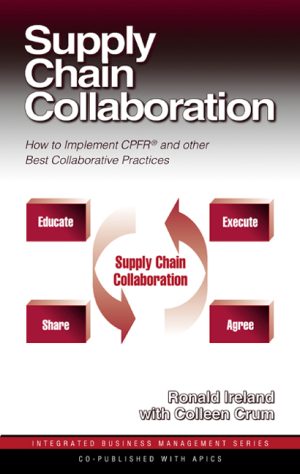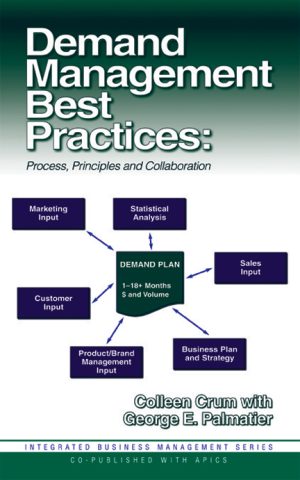Systems Engineering with Economics, Probability and Statistics
$89.95
Second Edition
By C. Jotin Khisty, Jamshid Mohammadi and Adjo A. Amekudzi
Hardcover, 7.5 x 9.25, 624 pages
ISBN: 978-1-60427-055-6
January 2012
Description
This extensively revised comprehensive textbook, covering a wide range of topics, is suitable for courses at the graduate and undergraduate levels, each with a different emphasis. There is more than enough material to cover two semesters of an undergraduate course, as well as a one semester graduate course. The pedagogy provides enough flexibility for an instructor to teach the topics in systems engineering she or he would like. Systems Engineering with Economics, Probability and Statistics, Second Edition is sufficiently broad-based for undergraduate and graduate programs in various branches of engineering and management.
Key Features
- Includes a wide range of topics covering the fundamentals and practice applications of probability and statistics (including advanced topics on statistical analysis, testing and interpretation of engineering data), microeconomics, engineering economics, hard systems (such as linear programming, decision analysis, CPM, LOB and PERT), soft systems analysis (such as Checkland’s method), and sustainable development and sustainability applications in engineering planning
- Avoids the abstract mathematical approach usually found in textbooks on this subject, in favor of one that is geared to practical engineering applications
- Integrates the power of quantitative analysis, in a very concrete way, with the conceptual richness of economics and systems thinking to deal with engineering problems
- Examples and end-of-chapter exercises drives home the fact that answers to problems need not be merely “optimal” solutions, but must include value tradeoffs and lend themselves to an enriched decision-making process, most suitable for applications in an uncertain world. Numerous open-ended, real-world problems are included.
- Includes a unique chapter on “systems thinking”—a first of its kind in a textbook on systems engineering. It covers the most recent soft systems structuring methods available in dealing with complexity, uncertainty, and conflict. A new case-studies chapter applying soft systems methods is also included.
- Contains two new chapters—one on sustainable development, sustainability, engineering and planning; and the other on case studies dealing with engineering and planning for sustainability.
- WAV material includes a solutions manual for those exercise problems that require numerical solutions — available from the Web Added Value™ Download Resource Center at www.jrosspub.com
About the author(s)
Dr. C. Jotin Khisty is a Professor Emeritus of Civil and Architectural Engineering at the Illinois Institute of Technology (IIT), Chicago, Illinois. He was a professor of Civil Engineering and the Director of the Transportation and Infrastructure program at IIT from 1990 to 2002. Prior to joining IIT, he was on the faculty at Washington State University, Pullman, WA, from 1978 to 1990, where he also served as the Deputy Director of the Washington State Transportation Research Center. He gained his PhD in Transportation Systems Engineering from The Ohio State University, Columbus. He has had considerable field experience, first in India and Germany on large civil engineering projects, and later as a transportation engineer and planner with Metropolitan Planning Organizations in the USA. He has published more than 100 papers in journals, conference proceedings, and book chapters on systems science, transportation and traffic engineering, infrastructure systems planning, sustainable systems and economic analysis. He is the author of two books on transportation engineering. Dr. Khisty currently serves on the advisory committee of the International Journal of Systemic Practice and Action Research and on committees of the Transportation Research Board, National Academies, Washington, DC. He is a Life Member of the American Society of Civil Engineers, the Institute of Transportation Engineers, and the International Society of Systems Sciences. He is a registered professional engineer.
Dr. Jamshid Mohammadi is a professor of civil and architectural engineering at the Illinois Institute of Technology (IIT), Chicago, Illinois. Over the period 1997-2011, he also served as the chairman of the Department of Civil, Architectural and Environmental Engineering at IIT. He graduated from the University of Illinois at Urbana-Champaign with MS and PhD degrees. His publication records include more than 100 papers in journals and conference proceedings in the areas related to system reliability, probabilistic methods and risk analysis with specific applications in structural engineering. He is an author, co-author or editor of four books and conference proceedings. He served as the associate editor of Journal of Structural Engineering of the American Society of Civil Engineers (ASCE) from 1998-2004. Currently, he is the editor of ASCE’s Practice Periodical on Structural Design and Construction. He is a member of ASCE and has been active at ASCE in several committees including the fatigue and fracture reliability committee and structural reliability committee. He is a licensed professional engineer in Illinois, a registered civil engineer in California and a licensed structural engineer in Illinois.
Dr. Adjo Amekudzi is an associate professor of civil and environmental engineering at the Georgia Institute of Technology in Atlanta, Georgia. She earned her Bachelor’s degree in Civil Engineering (Structures) from Stanford University, Masters in Civil Engineering (Transportation) from Florida International University, and Masters in Civil Infrastructure Systems and Ph.D. in Civil and Environmental Engineering (Infrastructure Systems) from Carnegie Mellon University. Amekudzi’s research, teaching and professional activities focus on the study, development and application of systems methods to civil infrastructure decision making to promote sustainable development. She has published over fifty papers on sustainability planning and evaluation and infrastructure asset management, and an edited book on infrastructure reporting and asset management. Amekudzi is the founding chair of the Committee on Sustainability and the Environment of the Transportation and Development Institute of the American Society of Civil Engineers (ASCE). She serves on the Board on Infrastructure and the Constructed Environment (BICE) of the National Research Council of the National Academies. She is also on the editorial board of the International Journal of Sustainable Transportation, and as associate editor of the ASCE Journal of Transportation Engineering and ASCE Journal of Infrastructure Systems.
Table of Contents
Chapter 1: MAPPING THE TERRAIN OF THE SYSTEMS APPROACH
1.1 Introduction
1.2 The Nature of Science
1.3 Engineering Planning, Design, and Management
1.4 The Systems Approach
1.5 Steps in Systems Analysis
1.6 Classification of Systems
1.7 Systems Characteristics
1.8 Systems Analysis and Decision Making
1.9 Models and Model-Building
Summary
References
Exercises
Chapter 2: PROBLEM SOLVING AND DESIGNING IN ENGINEERING AND PLANNING
2.1 Introduction
2.2 Problem Solving and Designing
2.3 Hierarchy: Problem-Space, Trees, and Semi-Lattices
2.4 Problem Solving Styles
2.5 Wicked Problems
2.6 Measurement and Scaling
2.6.1 Sources of Data
2.6.2 Measurement
2.6.3 Scales of Measurement
2.7 System Model Types and Model-Building
2.7.1 Model Types
2.7.2 Models Used in Planning and Engineering
2.8 Problem-Solving Through Group or Committee Action
Summary
References
Exercises
Chapter 3: BASIC ENGINEERING ECONOMICS AND EVALUATION
3.1 Introduction
3.2 Notations
3.3 Simple Interest
3.4 Compound Interest
3.5 Uniform Series of Payments
3.5.1 Compound Amount Factor (CAF)
3.5.2 Sinking Fund Factor (SFF)
3.5.3 Present Worth Factor (PWF)
3.5.4 Capital Recovery Factor (CRF)
3.6 Uniform Gradient Series
3.7 Discrete Compound Interest Factors
3.8 Uniform Continuous Cash Flow and Capitalized Cost
3.9 Evaluation
3.10 Feasibility Issues
3.11 Evaluation Issues
3.12 The Evaluation Process
3.13 Values, Goals, Objectives, Criteria, and Standards
3.14 Estimation of Costs, Impacts, and Performance Levels
3.14.1 Capital, Operating, and Maintenance Costs
3.14.2 User Costs
3.14.3 Impacts
3.14.4 Performance Levels
3.15 Evaluation of Alternatives
3.16 Economic and Financial Concepts
3.17 Analysis Techniques
3.17.1 Economic Evaluation Methods (Efficiency Analysis)
3.17.2 Cost-Effectiveness Analysis
3.17.3 Multicriteria Evaluation Method
3.17.4 Benefit-Cost Analysis
3.17.5 The Willingness-To-Pay Concept
3.18 Depreciation and Taxes
3.19 Reporting Results
Summary
References
Exercises
Chapter 4: BASIC MICROECONOMICS FOR ENGINEERS AND PLANNERS
4.1 The Scope of Economics and Microeconomics
4.2 Some Basic Issues of Economics
4.3 Demand for Goods and Services
4.4 Demand, Supply, and Equilibrium
4.5 Sensitivity of Demand
4.6 Factors Affecting Elasticities
4.6.1 Income Elasticities
4.6.2 Price Elasticities
4.6.3 Elasticity and Total Revenue
4.6.4 Price Elasticity of Supply
4.7 Kraft Demand Model
4.8 Direct and Cross Elasticities
4.9 Consumer Surplus
4.10 Costs
4.10.1 Laws Related To Costs
4.10.2 Average Cost
4.10.3 Marginal Cost
4.11 Consumer Choice
Summary
References
Exercises
Chapter 5: PRINCIPLES OF PROBABILITY: PART I—REVIEW OF PROBABILITY THEORY
5.1 Introduction
5.2 Events
5.2.1 Complementary Event
5.2.2 Combination of Events
5.2.3 Mutually Exclusive and Collectively Exhaustive Events
5.3 Probability
5.3.1 Probability of the Union of Events
5.3.2 Conditional Probability and Probability of Intersection of Events
5.3.3 Bayes’ Theorem
5.3.4 deMorgan’s Rule
5.3.5 Total Probability Theorem
Summary
References
Exercises
Chapter 6: PRINCIPLES OF PROBABILITY: PART II—RANDOM VARIABLES AND PROBABILITY DISTRIBUTIONS
6.1 Random Variables
6.1.1 Discrete Random Variables
6.1.2 Continuous Random Variables
6.2 Probability Functions
6.2.1 Probability Mass Function and Cumulative Distribution Function
6.2.2 Probability Density and Distribution Functions
6.3 Describing Parameters of a Random Variable
6.3.1 Mathematical Expectation
6.3.2 Mean or Expected Value
6.3.3 The Variance and Standard Deviation
6.3.4 Median and Mode
6.3.5 Moments of a Random Variable
6.4 Several Useful Probability Functions
6.4.1 Normal (Gaussian) Probability Density Function
6.4.2. Rayleigh Probability Density Function
6.4.3 Logarithmic Normal Probability Density Function
6.4.4 The T-Distribution
6.4.5 Binomial Distribution Function
6.4.6 Poisson Distribution Function
6.4.7 Exponential Distribution Function
Summary
References
Exercises
Chapter 7: PRINCIPLES OF PROBABILITY: PART III —JOINT PROBABILITY FUNCTIONS AND CORRELATED VARIABLES
7.1 Introduction
7.2 Joint Probability Functions
7.2.1 Joint Probability Mass Function
7.2.2 Joint Probability Density Function
7.3 Covariance and Correlation
7.3.1 Covariance
7.3.2 Correlation Coefficient
7.3.3 Bivariate Normal Distribution
7.4 Functions of A Single Random Variable
7.4.1 Discrete Random Variable Case
7.4.2 Continuous Random Variable Case
7.5 Functions of Multiple Random Variables
7.5.1 Special Case: Linear Functions of Independent Normal Random Variables
7.5.2 Special Case: The Product (or Quotient) of Independent Log-Normal Random Variables
7.6. Approximate Methods for Computing Mean, Variance and Probability
7.6.1 Simulation Method
7.6.2 Approximate First and Second Order Estimates for the Mean and Variance
Summary
References
Exercises
Chapter 8: PRINCIPLES OF STATISTICS: PART I—ESTIMATION OF STATISTICAL PARAMETERS AND TESTING VALIDITY OF DISTRIBUTION FUNCTIONS
8.1 Introduction
8.2 Data Compression
8.2.1 Processing Data into Occurrence Frequencies
8.2.2 Processing Time-Dependent Data
8.3 Estimation of Mean and Variance
8.4 Confidence Intervals for Statistical Parameters
8.4.1 Confidence Intervals for the Mean
8.4.2 One-Sided Confidence Limits
8.4.3 Determination of the Sample Size in an Experiment
8.4.4 Confidence Intervals for Other Statistical Parameters
8.4.5 Determination of Sample Size for Estimating Proportions
8.5 Estimation of Statistical Parameters Using the Method of Maximum Likelihood
8.6 Testing Data for a Desired Distribution Model
8.6.1 Branch-and-Leaves Method
8.6.2 Determination of the Shape of Distribution from Frequency-of-Occurrence Diagram
8.6.3 Probability-Scaled Plotting
8.6.4 Chi-Square Goodness-of-Fit Test for Testing Validity of a Distribution Model
8.6.5 Kolmogorov-Smirnov Test
Summary
References
Exercises
Chapter 9: PRINCIPLES OF STATISTICS: PART II—HYPOTHESIS TESTING, ANALYSIS OF VARIANCE, REGRESSION, AND CORRELATION ANALYSIS
9.1 Introduction
9.2 Hypotheses Testing
9.2.1 Hypothesis and Significance Testing of a Population Mean
9.2.2 Hypothesis Testing of a Proportion
9.3 Comparing Two Population Means
9.3.1 Testing of Equality of Two Variances
9.3.2 Comparing Mean Values from Independent Populations with Identical Variances (Pooled T)
9.3.3 Comparing Means from Independent Populations with Unequal Variances
9.3.4 Comparing Means from Dependent Populations (Paired T)
9.4 Analysis of Variance
9.4.1 One-Way Classification, Completely Random Design with Fixed Effect
9.4.2 Multiple Range Test
9.4.3 Random Effect
9.5 Distribution-Free Methods
9.5.1 Test of Location for a Given Sample Data
9.5.2 Wilcoxon Signed-Rank Test
9.5.3 Wilcoxon Signed-Rank Test for Paired Data
9.5.4 Wilcoxon Rank-Sum Test for Unmatched Data
9.5.5 Tests for Several Populations
9.6 Regression and Correlation Analysis
9.6.1 Simple Linear Regression Analysis
9.6.2 Correlation Coefficient
9.6.3 Strength of Linear Correlation
9.6.4 Multiple Linear Regression Analysis
9.6.5 Nonlinear Regression
9.6.6 Spearsman’s Rank Correlation Coefficient
Summary
References
Exercises
Chapter 10: BASIC HARD SYSTEMS ENGINEERING—PART I
10.1 Introduction: Hard Systems Analysis
10.2 Methods Based On Calculus
10.2.1 Production Function Characteristics
10.2.2 Relationship among Total, Marginal, and Average Cost Concepts and Elasticity
10.2.3 The Method of Lagrange Multipliers
10.3 Critical Path Method
10.3.1 Key Concepts
10.3.2 CPM Scheduling
10.3.3 The Time-Grid Diagram and Bar Charts
10.3.4 Resource Scheduling
10.3.5 Time-Cost Optimization
10.4 Program Evaluation and Review Technique and the Line-of-Balance Technique
10.4.1 Key Concepts of PERT (See Figure 10.2)
10.4.2 The LOB Technique
10.4.3 Progress Charts and Buffers
10.4.4 Resource and LOB Schedule
10.5 Network Flow Analysis
10.5.1 Key Concepts
10.5.2 Minimum Spanning Tree
10.5.3 The Maximal Flow Problem
10.5.4 Shortest-Path or Minimum-Path Technique
10.6 Linear Programming
10.6.1 The Graphical Method
10.6.2 Simplex Algorithm
10.6.3 Marginal Value or Shadow Pricing
10.6.4 Primal and Dual Problem Formulation Characteristics and Interpretation
10.6.5 Solving Minimization Problems with Simplex
10.6.6 Interpretation of the Primal and Dual Models
Exercises
Chapter 11: BASIC HARD SYSTEMS ENGINEERING—PART II
11.1 Introduction
11.2 Forecasting
11.2.1 Regularity
11.2.2 Use of Time Series
11.3 Transportation and Assignment Problem
11.3.1 Introduction
11.3.2 Northwest Corner Method
11.3.3 The Minimum-Cost Cell Method
11.3.4 The Penalty or “Vogel’s” Method
11.3.5 How Do We Determine An Optimum Solution?
11.3.6 The Unbalanced and Other Transportation Problems
11.3.7 The Assignment Problem
11.4 Decision Analysis
11.4.1 Overview
11.4.2 Decision Making Under Conditions of Uncertainty
11.4.3 Decision Making Under Uncertainty with Probabilities
11.5 Queuing Models
11.5.1 Introduction
11.5.2 Characteristics of Queuing Systems
11.5.3 Model 1 (D/D/1) Deterministic Queuing Model
11.5.4 Model 2 (M/D/1)
11.5.5 Model 3 M/M/1
11.5.6 The Economics and Operating Characteristics of Queuing Discipline
11.5.7 Model 4 M/M/N
11.6 Simulation
11.6.1 Introduction
11.6.2 Random Numbers
11.6.3 Simulations Using Known Probabilities
11.7 Markov Analysis
11.7.1 Characteristics of Markov Analysis
11.7.2 Special Transition Matrices
Exercises
Chapter 12: SYSTEMS THINKING
12.1 Introduction
12.2 Systems Thinking
12.2.1 The Nature of Systems
12.2.2 System of Systems Thinking
12.3 Hard Systems Thinking
12.3.1 Preamble
12.3.2 Systems Analysis
12.3.3 Systems Engineering
12.2.4 Operations Research
12.4 Soft Systems Thinking
12.4.1 Preamble
12.4.2 The Path from Optimization to Learning
12.4.3 Checkland’s SSM
12.4.4 Ackoff’s Interactive Planning
12.4.5 Senge’s Fifth Discipline
12.4.6 Strategic Options Development and Analysis (SODA)
12.5 Critical Systems Thinking
12.6 Multimodal Systems Thinking
12.7 Reflections and Summary
References
Exercises
Chapter 13: SYSTEMS THINKING: CASE STUDIES
13.1 Introducing the Case Studies
13.2 Case Study 1: Transportation Project Selection Using Robustness Analysis
13.2.1 Introduction
13.2.2 Background: Robustness and Debility
13.2.3 Road Construction using Robustness
13.2.4 Algorithm for Robustness
13.2.5 Discussion and Summary
13.3 Checkland’s Soft Systems Methodology (SSM) and Multimethodology Application to the Chicago Region
13.3.1 Background: Mixing and Matching
13.3.2 The Chicago Region Characteristics and Root Definitions
13.3.3 Multimodal Performance Indicators
13.3.4 Discussion and Summary
13.4 Case Study 3: Using SODA for the Chicago Transit Authority Study
13.4.1 Introduction
13.4.2 Background: Brown Line Rehabilitation Project
13.4.3 Soda Application
13.4.4 Findings
13.4.5 Summary: Goals and Expectations
13.4.6 Discussion and Summary
13.5 Case Study 4: Crisis Management Using SSM for Bhopal Gas Tragedy
13.5.1 Introduction
13.5.2 Crisis Management
13.5.3 The Bhopal Gas Tragedy
13.5.4 Application of SSM
13.5.4.1 Formulation of Root Definitions
13.5.4.2 Conceptual Models
13.5.4.3 Comparison of Conceptual Models and Root Definitions
13.5.5 Lessons Learned and Actions to be Taken
13.5.6 The Crisis Management Program
13.5.7 Discussion and Summary
13.6 Concluding Remarks
References
Chapter 14: SUSTAINABLE DEVELOPMENT, SUSTAINABILITY, ENGINEERING AND PLANNING
14.1 Introduction to Sustainable Development and Sustainability
14.1.1 Important Sustainability Issues for the Engineering Community
14.1.2 ASCE Code of Ethics and Sustainable Development
14.1.3 Sustainability and Systems Thinking
14.1.4 System Interconnections and Interdependencies
14.1.5 Strong versus Weak Sustainability
14.1.6 Shallow and Deep Ecology
14.2 Models of Sustainable Development and Sustainability
14.2.1 The Triple Bottom Line Framework
14.2.2 The IPAT Model
14.2.3 The Ecological Footprint Model
14.2.4 Triaxial Representation of Technological Sustainability
14.2.5 The Quality of Life/Natural Capital Model
14.2.6 The Sustainability Footprint
14.2.7 The True Sustainability Index
14.3 Planning and Designing for Sustainable Development and Sustainability
14.3.1 Planning and Project Development Methodologies for Sustainable Development and Sustainability
References
Exercises
Chapter 15: CASE STUDIES IN ENGINEERING AND PLANNING FOR SUSTAINABILITY
15.1 Introduction
15.2 The Interface Company’s Approach to Sustainability
15.2.1 Interface’s Seven-Front Approach to Sustainability
15.2.2 Measuring Progress toward Sustainability
15.2.2.1 Verification and Certification
15.2.3 Concluding Remarks: Interface, Inc.’s Journey to Sustainability
15.2 The New Zealand Transportation Strategy
15.2.1 Defining Sustainable Transportation
15.2.2 Defining a Vision, Objectives and Targets
15.2.3 A Multi-Sector Approach
15.2.4 Implementation: Turning Strategy into Action
15.2.5 Monitoring, Reporting and Review
15.2.6 Concluding Remarks: New Zealand’s Transportation Strategy
15.3 Sustainability Evaluation of Transportation Plan Alternatives Using Multiple Attribute Decision Making (MADM) Methodology
15.3.1 MADM Approach for Sustainability Evaluation of Plan Alternatives
15.3.2 Applying MADM and the Sustainability Diamond: Identifying Superior Plans
15.3.3. Concluding Remarks: Applying MADM and Visualization for Selecting Plan Alternatives
15.4 Conclusion
References
Exercises
INDEX
Related products
-

The Networked Supply Chain
Retail Price: $54.95$44.95 Add to cart -

Aircraft Finance
Retail Price: $99.95$89.95 Add to cart -

Achieving Project Management Success Using Virtual Teams
Retail Price: $49.95$39.95 Add to cart -

Supply Chain Collaboration
Retail Price: $54.95$49.95 Add to cart -

Demand Management Best Practices
Retail Price: $54.95$49.95 Add to cart

